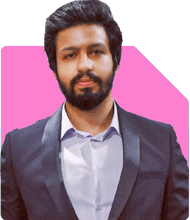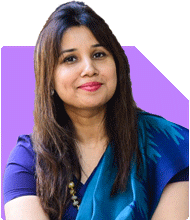Ramalingam Kalirajan |4106 Answers |Ask -Follow
Mutual Funds, Financial Planning Expert - Answered on Jun 27, 2024
He has an MBA in finance from the University of Madras and is a certified financial planner.
He is the director and chief financial planner at Holistic Investment, a Chennai-based firm that offers financial planning and wealth management advice.... more

Dear Sir, I have been investing for my 2 child's education, marriage and my retirement. My age: 41 years, Please suggest if any changes required in below portfolio and if I could meet my goals. 1st Child education: 8 years Present cost: 30 Lakh 1st Child marriage: 15 years Present cost: 20 lakh 2nd Child education: 18 years Present cost: 30 Lakh 2nd Child marriage: 27 years Present cost: 20 lakh Retirement Income: 14 years Current Need: 1 Lakh monthly --- Investment value: NPS: 22 lakh also 17000 rs sip EPF: 34 lakh also 40000 rs sip PPF: 10 lakh Direct Equity: 2 lakh 1.5 Cr life insurance 10+90 lakh health insurance Need specific advice on how to dump underperforming mutual fund? Need to pay huge taxes on redemption? That's the reason didn't sale those funds. 1. Miare Large&Midcap 35 lakh(12.5 k sip) 2. Mirae Large cap: 30 Lakh 10ksip 3. ICICI bluechip: 46 lakh 20k sip 4. Axis Midcap: 39 lakh 10k sip 5. Nippon Growth: 33 lakh 20ksip 6. Axis25: 22 lakh 7. Nippon multicap: 12 lakh 20ksip 8. SBI focused: 65 lakh 10ksip 9. HSBC Smallcap: 26 lakh 10ksip 10.Nippon smallcap: 52 lakh 30ksip 11. Axis long term equity: 20 lakh
Children’s Education and Marriage Goals
Your goals for your children’s education and marriage are well-defined:
1st Child Education: 8 years from now, with a present cost of Rs 30 lakh.
1st Child Marriage: 15 years from now, with a present cost of Rs 20 lakh.
2nd Child Education: 18 years from now, with a present cost of Rs 30 lakh.
2nd Child Marriage: 27 years from now, with a present cost of Rs 20 lakh.
Retirement Income Goal
Your retirement goal is to have a monthly income of Rs 1 lakh starting 14 years from now. This is essential for maintaining your lifestyle post-retirement.
Current Investment Portfolio Analysis
Your portfolio comprises NPS, EPF, PPF, direct equity, and several mutual funds. Let’s break down each component and evaluate its suitability.
National Pension System (NPS)
You have Rs 22 lakh in NPS and a SIP of Rs 17,000. NPS is a good long-term investment for retirement with tax benefits under Section 80C and 80CCD(1B). However, it’s primarily locked until retirement, limiting liquidity. NPS is a low-cost option and provides a mix of equity, corporate bonds, and government securities, but its returns are market-linked, meaning they can fluctuate.
Employees’ Provident Fund (EPF)
With Rs 34 lakh in EPF and a SIP of Rs 40,000, EPF is another solid investment for retirement. It offers a decent return with tax benefits, but like NPS, it lacks liquidity until retirement. EPF provides a fixed interest rate, which is reviewed annually by the government, and it's relatively safer compared to market-linked products.
Public Provident Fund (PPF)
Your PPF has Rs 10 lakh. PPF is a safe investment with tax benefits, but it has a lock-in period of 15 years. It’s suitable for long-term goals but not very flexible. PPF offers a fixed rate of return, which is revised quarterly by the government. It's entirely tax-free and risk-free but doesn't provide returns as high as equity investments.
Direct Equity
You have Rs 2 lakh in direct equity. Direct equity can offer high returns but comes with high risk. It's important to ensure diversification to manage this risk effectively. Direct equity investments require a good understanding of the market and individual companies. It's crucial to monitor these investments regularly and be ready to exit when necessary.
Mutual Funds
Your mutual funds portfolio is quite extensive. Here's a detailed analysis of each scheme:
Large & Midcap Funds
Scheme 1: Large & Midcap Fund
Investment Amount: Rs 35 lakh
SIP: Rs 12,500
Large & Midcap funds provide a balance between stability and growth by investing in both large-cap and mid-cap stocks. These funds can potentially offer higher returns compared to pure large-cap funds but come with slightly higher risk. Review the performance of this fund over the past 3-5 years and compare it to its benchmark and peers. If it’s consistently underperforming, consider switching to a better-performing fund.
Large Cap Funds
Scheme 2: Large Cap Fund
Investment Amount: Rs 30 lakh
SIP: Rs 10,000
Large Cap funds invest in large, established companies and generally provide more stability but potentially lower returns than mid and small-cap funds. These funds are less volatile and are suitable for conservative investors. Check the fund's track record against its benchmark and peers. Consistent underperformance may warrant a switch to a better-performing large-cap fund.
Scheme 3: Bluechip Fund
Investment Amount: Rs 46 lakh
SIP: Rs 20,000
Bluechip funds, a subset of large-cap funds, invest in the most stable and financially sound companies. These funds are ideal for risk-averse investors. Assess the performance of this fund in comparison to other bluechip funds. If it’s underperforming, consider alternatives.
Midcap and Smallcap Funds
Scheme 4: Midcap Fund
Investment Amount: Rs 39 lakh
SIP: Rs 10,000
Midcap funds invest in medium-sized companies with high growth potential but also higher risk. They are suitable for investors with a moderate to high-risk appetite. Compare this fund’s performance to other midcap funds. If it’s not meeting expectations, a switch might be necessary.
Scheme 5: Growth Fund
Investment Amount: Rs 33 lakh
SIP: Rs 20,000
Growth funds focus on companies expected to grow at an above-average rate. These can include mid and small-cap companies. Evaluate this fund’s performance, especially its growth metrics. Underperformance over a sustained period should prompt a review.
Scheme 6: Multicap Fund
Investment Amount: Rs 12 lakh
SIP: Rs 20,000
Multicap funds invest across large, mid, and small-cap stocks, providing diversification. They are suitable for investors looking for a mix of stability and growth. Review the performance across market cycles and compare it to other multicap funds.
Scheme 7: Focused Fund
Investment Amount: Rs 65 lakh
SIP: Rs 10,000
Focused funds invest in a limited number of high-conviction stocks. They can offer high returns but come with higher risk due to lack of diversification. Assess the fund’s stock-picking ability and its returns relative to its focused peers.
Scheme 8: Smallcap Fund 1
Investment Amount: Rs 26 lakh
SIP: Rs 10,000
Smallcap funds invest in smaller companies with high growth potential but also high risk. Suitable for investors with a high-risk appetite. Check the fund’s performance during market downturns and its overall return consistency.
Scheme 9: Smallcap Fund 2
Investment Amount: Rs 52 lakh
SIP: Rs 30,000
Another smallcap fund in your portfolio. Similar to the first one, ensure you’re not overexposed to this segment. Diversify if necessary and review the fund’s performance critically.
ELSS (Equity Linked Savings Scheme)
Scheme 10: Long Term Equity Fund
Investment Amount: Rs 20 lakh
ELSS funds provide tax benefits under Section 80C with a lock-in period of 3 years. They invest primarily in equities and have the potential for high returns. Evaluate this fund’s performance against other ELSS funds, considering both returns and the lock-in period.
Insurance
You have life insurance worth Rs 1.5 crore and health insurance of Rs 10 lakh + Rs 90 lakh. This coverage seems adequate. Ensure your health insurance covers critical illnesses as well.
Recommendations for Mutual Funds
Underperforming Funds
It’s essential to review and potentially dump underperforming mutual funds. Look for funds consistently underperforming their benchmarks over 3-5 years. Consider switching to better-performing funds even if it means paying capital gains tax.
Tax Implications
Yes, redemption might incur taxes. However, long-term capital gains from equity mutual funds are taxed at 10% above Rs 1 lakh in a financial year. It’s often worth paying the tax to switch to better-performing funds.
Diversification
Ensure your portfolio is well-diversified across large-cap, mid-cap, and small-cap funds. This will help balance risk and return.
Steps to Optimize Your Portfolio
1. Review and Realign Mutual Funds
Assess the performance of your current mutual funds. Exit underperforming funds and reallocate those investments into well-performing funds aligned with your goals.
2. Balance Risk and Return
Ensure your investments in equity, debt, and hybrid funds are balanced according to your risk tolerance and goals. Diversification is key to managing risk.
3. Regular Monitoring
Keep track of your portfolio regularly. Market conditions change, and regular reviews can help you make timely adjustments.
4. SIP Adjustments
Evaluate your SIP amounts and adjust them if necessary. Ensure that your SIPs are aligned with your financial goals and timelines.
Specific Advice for Mutual Funds
Large & Midcap Funds
These funds are good for balancing growth and stability. Ensure the funds you hold in this category are performing well against their benchmarks.
Large Cap Funds
These funds are generally more stable. However, review their performance to ensure they’re meeting your expectations.
Midcap and Smallcap Funds
These funds offer higher growth potential but with higher risk. Ensure these funds are performing well and fit your risk tolerance.
Sectoral and Thematic Funds
If you hold any sectoral or thematic funds, review their performance carefully. These funds can be more volatile and require close monitoring.
Managing Tax Implications
Long-Term Capital Gains (LTCG) Tax
Long-term capital gains from equity mutual funds over Rs 1 lakh are taxed at 10%. Plan your redemptions to minimize tax liability.
Systematic Withdrawal Plan (SWP)
Consider using an SWP to manage redemptions and spread the tax liability over multiple financial years.
Final Insights
You’ve done a commendable job planning for your financial goals. Regularly review and realign your portfolio to stay on track. Exit underperforming mutual funds and reinvest in better options even if it means paying taxes. Balance your risk and return through proper diversification. Keep monitoring your portfolio and make adjustments as needed.
Investing is a continuous process that requires regular attention and adjustments. With careful planning and execution, you can achieve your financial goals.
Best Regards,
K. Ramalingam, MBA, CFP,
Chief Financial Planner,
www.holisticinvestment.in
You may like to see similar questions and answers below
Ramalingam Kalirajan |4106 Answers |Ask -Follow
Mutual Funds, Financial Planning Expert - Answered on Apr 26, 2024
Ramalingam Kalirajan |4106 Answers |Ask -Follow
Mutual Funds, Financial Planning Expert - Answered on Apr 26, 2024
Ramalingam Kalirajan |4106 Answers |Ask -Follow
Mutual Funds, Financial Planning Expert - Answered on May 30, 2024
Hardik Parikh |106 Answers |Ask -Follow
Tax, Mutual Fund Expert - Answered on Apr 23, 2023
Mohit Arora |59 Answers |Ask -Follow
Dating Coach - Answered on Jun 30, 2024
Mohit Arora |59 Answers |Ask -Follow
Dating Coach - Answered on Jun 30, 2024
Aruna Agarwal |68 Answers |Ask -Follow
Child and Parenting Counsellor - Answered on Jun 30, 2024
Ramalingam Kalirajan |4106 Answers |Ask -Follow
Mutual Funds, Financial Planning Expert - Answered on Jun 30, 2024
Ramalingam Kalirajan |4106 Answers |Ask -Follow
Mutual Funds, Financial Planning Expert - Answered on Jun 30, 2024
Parthiban T R |120 Answers |Ask -Follow
Career Counsellor - Answered on Jun 30, 2024
Parthiban T R |120 Answers |Ask -Follow
Career Counsellor - Answered on Jun 30, 2024
Ramalingam Kalirajan |4106 Answers |Ask -Follow
Mutual Funds, Financial Planning Expert - Answered on Jun 30, 2024
Ramalingam Kalirajan |4106 Answers |Ask -Follow
Mutual Funds, Financial Planning Expert - Answered on Jun 30, 2024
Ramalingam Kalirajan |4106 Answers |Ask -Follow
Mutual Funds, Financial Planning Expert - Answered on Jun 30, 2024











.jpg)












